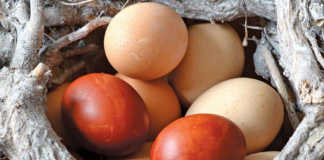
A single rat is capable of consuming up to 10% of its body weight in food each day. Assuming that the average rat weighs 250g, that’s 25g of food every day. Consider the number of rats around, the rate at which they multiply, and the number of days in which produce such as grain is stored, and it’s obvious how quickly losses can accumulate. One should also factor in contamination by fur, droppings and urine. A single rat can produce 6l of urine a year and pump out 15 000 droppings, while a mouse produces 1l and 30 000 droppings a year.
Rats and mice are carriers of several diseases and parasites, some of which can be transmitted to livestock and humans. These can include diseases such as leptospirosis, toxoplasmosis and salmonella. It is even thought that rodents might contribute to the spread of foot-and-mouth disease. Although your farm may contain a limitless supply of food for these pests, you can control other conditions that prevent them from re-entering a sanitised area.
Start by creating a‘sterile’ strip around the grain store. Keep the floor clear of clutter such as old machinery and building materials – this provides cover and nesting areas. With nowhere to hide, rats and mice are less likely to take up residence as they need the security of cover. Furthermore, if you have a clean, sanitised area, any infestation will become more evident at an early stage, and counter-measures can be put in place more quickly.
Secondary protection
It is seldom possible to make a building 100% rodent-proof. If a rodent can get its head through a gap, it can squeeze the rest of its body through as well. It therefore makes sense to protect the contents of a room by using some form of secondary protection. This can include rodent-proof containers, such as galvanised drums with tight-fitting lids. Fit a protective strip of galvanised steel along the edge nearest the floor to doors, while windows should be protected with a robust wire mesh.
In many cases, leaving natural predators to sort out a rodent problem will seldom keep the rodents at an economic population level; they can often reproduce faster than predators can control them, unless predators are in sufficient numbers. There are two exceptions to this – cats and snakes. Not only do cats prey on rodents, their mere presence can act as a deterrent. Snakes are proactive in the control of rodents, eating young and old alike, without damaging the stored grain. A snake in your storeroom will ensure that you definitely won’t have a rodent problem.
Other methods of control
In large grain stores, mechanical means of rodent control are not very efficient due to the sheer size of the building; these are more suited to small buildings. Mechanical control generally involves the use of spring traps, sticky pads (inhumane) and ultrasonic devices.
However, although the latter are marketed as safe, reliable methods of rodent control, most of the scientific literature I have read says that ultrasonic devices do not work. Experiments have shown that rodents quickly become accustomed to repetitive sounds, a process called habituation. Over time, they realise that the ultrasound is not dangerous and simply ignore it. One of the most common methods of rodent control is the use of rodenticides (poisons). But these can in turn poison wildlife such as birds and snakes that may eat the poisoned animals.
The use of poison and its placement should therefore be carefully controlled to prevent secondary accidental poisoning. The placement and other factors depend on the layout of each site.
Working together
It is important that good management practices also be employed by surrounding farmers or tenants. Although you may maintain a sanitised area, those around you may not, and there is a tendency for rats and mice to migrate between the two areas. It is therefore worthwhile to work with neighbours to synchronise when areas are being disinfected or cleaned in order to prevent rats or mice moving from one farm to the next. If all neighbours sanitise at the same time, the rodents will have nowhere to go.












